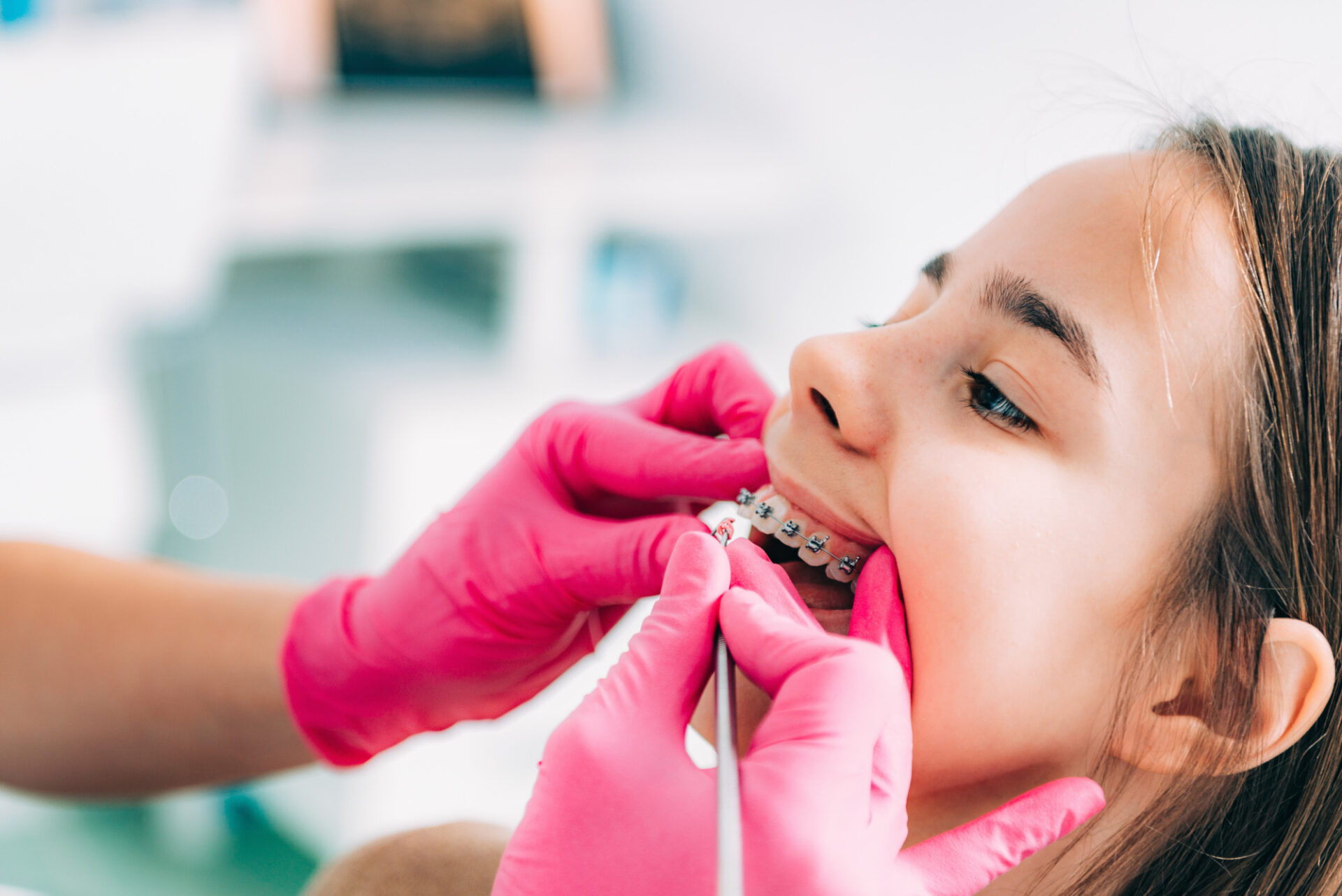
Posted on March 31, 2021

Everyone wants a dazzling smile, right? Well, sometimes it requires a little help.
As your child gets older and their baby teeth fall out, you may be wondering whether they need to get braces or not.
The chances are high, especially when orthodontists estimate that roughly 45 percent of children need braces to fix functional problems. Still, some of these problems aren’t so obvious.
So, how are you supposed to know when it’s time to bring your child to the orthodontist and get them braces? We’ll break it down for you in this guide.
Let’s get started.
If you’re noticing that your child is having issues when they speak, chew, or swallow, then that might be a sign that it’s time to take them to the orthodontist. Check to see if their teeth collide when they’re chewing and ask if they have a weird sensation through their face and/or jaw.
It’s also worth noting that your child might have problems with saying certain words or slurred speech. All of these issues might be a result of a misaligned bite. Once this is corrected, the issues with chewing or speaking will go away.
Generally, a child’s baby teeth begin to loosen and fall out to make room for permanent teeth around 6. This can be delayed by as much as a year. However, if you notice your child losing those baby teeth too early or too late, this is a sign that they may need braces.
Losing your baby teeth too early causes teeth to move into empty spaces while adult teeth are still growing. Losing baby teeth too late can cause different teeth alignment issues. Keep an eye out for when your little one loses their teeth.
If anything seems abnormal, then be sure to get their mouth looked at.
Another symptom of misaligned teeth is that they negatively affect your ability to eat comfortably. Your child might start biting the inside of their cheeks, or their lower teeth might scrape the roof of their mouth.
See if they are having trouble eating or if they’re complaining about biting their cheek too much. This may be because their teeth are crooked, and so their bite is off.
Although your little one sucking their thumb may seem cute at first, a history of this habit might mean they need braces. Thumb-sucking may cause your child’s front teeth to protrude outward and cause crowding on their bottom teeth.
Most kids stop sucking their thumb when they’re around two or four years old. If they’re continuing to suck their thumb as the permanent teeth grow in, they might end up needing braces.
Mouth breathing refers to the act of breathing through the mouth, which often occurs when there’s a problem with breathing through the nose. Your child might have their mouth open often, and this can affect the appearance of their face. It will also affect the growth of their teeth.
This is because their tongue isn’t able to sit on the roof of their mouth, so they might develop a longer face with a more narrow jaw. You’ll notice that there’s a smaller space for the adult teeth to grow, and this will require braces.
If you notice your child’s teeth are too close together or overlap, this is called crowding. This can cause various problems, including mouth breathing, lisps, uncomfortable chewing or biting and irregular teeth alignment.
It might even inhibit your child from flossing or brushing their teeth properly, and that can cause plaque and tooth decay. Braces fix this problem by straightening their teeth and placing them in the proper position.
An overbite occurs when you have vertically and horizontally overlapping front teeth. You’ll notice your child’s top teeth close too far beyond their bottom teeth—the more extreme, the more noticeable its effects.
When you don’t treat an overbite, it can leave your child vulnerable to oral trauma and broken front teeth.
An underbite, as you might have guessed, is the opposite of an overbite. This occurs when the bite closes with upper front teeth behind the lower teeth. Your child might have a disproportionate jaw, biting or chewing problems, and an imbalanced facial structure.
Generally, having neatly aligned jaws that fold over each other is an important sign of oral health.
A crossbite refers to teeth that don’t fit over each other when you close your mouth. There are two different types of crossbite: anterior and posterior.
Anterior crossbite refers to the group of teeth in the bottom front of your mouth fitting over the teeth of your top jaw, while a posterior crossbite refers to the group of lower teeth fitting over the teeth in your top jaw.
Although it’s pretty rare, there is a chance your child might have an open bite. This is characterized by a vertical gap between the front upper and front lower teeth when a person bites down completely. The back teeth touch before the front teeth do.
This type of bite makes it very difficult to bite through certain foods completely. That’s why it’s crucial to get this fixed as quickly as possible.
As a parent, you only want what’s best for your child. Unfortunately, it can be difficult to tell when something is an issue or when you’re overly cautious. When it comes to your kid’s dental health, it’s good to be cautious.
Oral health is a window to your overall health after all.
If you notice any or multiple of these signs, it means your child might need to get braces. This will help correct any dental issues and give them a new amazing smile.
Ready to book a consultation and get your child one step closer to a great smile? Be sure to schedule your first visit with us!